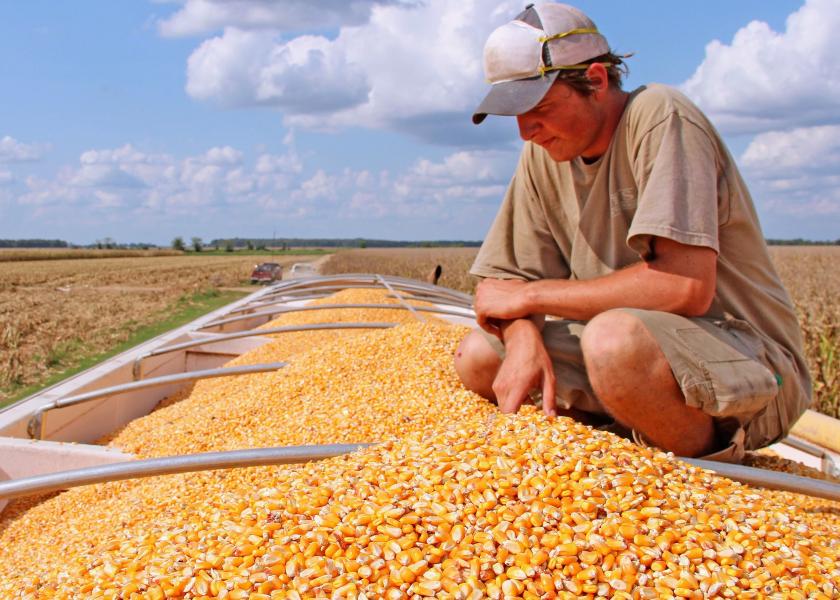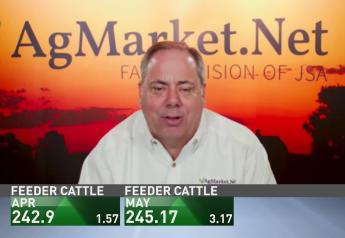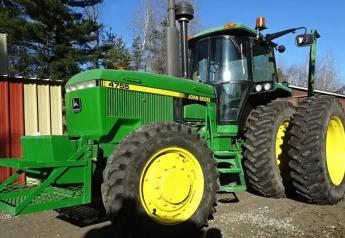New Corn Eats Sun, Boosts Yield

Bring on the sun. The first photosynthetic trait in corn is moving toward farmland and shows a strong yield bump in field trials, consistently adding bushels in the high single digits.
Benson Hill Biosystems and Beck’s Hybrids are partnering to bring a photosynthetic efficiency trait to the agriculture market. The technology will allow corn plants to use sunlight and carbon more efficiently to convert more energy into harvestable grain without additional grower inputs.
The corn market is stocked with transgenic traits related to insect resistance and herbicide tolerance, but Benson Hill aims to deliver a fundamentally different path to increase yield and farm sustainability. “In nature, photosynthesis focuses on survival and reproduction, not maximum yield. Today, even the most elite germplasm is highly inefficient in converting water, sunlight and carbon into grain,” explains Matthew Crisp, CEO and co-founder of Benson Hill. Over several years of laboratory and field research, Crisp’s team has fine-tuned a trait to enable more robust primary metabolism, the most fundamental system, in the corn plant.
(For more on photosynthesis and yield, see Corn’s Carbon Cowboy Busts Outstanding Yields)
Over three-plus years of field trial data spread across 12 diverse test sites in the U.S., Benson Hill has recorded steady yield increases ranging between 8-9%, according to Crisp: “We’re seeing upper single digit increases over and over. This is a broad-acre trait effective for a wide variety of grower conditions.”
Benson Hill is testing different geographies in the Corn Belt as well as distinct genetic backgrounds and germplasm. “We keep seeing consistent yield results, regardless of location,” Crisp notes. “This will be an opportunity for growers to improve their profitability just by using sunlight more efficiently.”
The trait has fared exceptionally well in irrigated and non-irrigated trials ranging from southern Kansas to northern Iowa, according to Todd Mockler, CTO and co-founder of Benson Hill, as well as faculty member at the Donald Danforth Plant Science Center. “We’ve seen up to a low-medium double digit increase in yield at several locations. But regardless of location, the yield results are always strong because photosynthesis is vitally important.”
Echoing Crisp, Mockler says photosynthetic efficiency is remarkably low in plants: “Take a crop like sugarcane—its photosynthesis efficiency is only about 6%. And imagine a corn field in the summer during a clear day being blasted with sunlight. The corn gets far more light than it can capture through photosynthesis and most of the energy is lost.”
By increasing or decreasing the expression of certain genes, or by adjusting where gene expression takes place in the corn plant (such as specific cell type or leaf portion), genetic switches and circuits can be dialed up or down, essentially altering the efficiency or capacity of photosynthesis, explains Mockler: “We used our computational biology platforms to identify genes we thought would have an effect on photosynthesis. We have tested candidates and identified more than a dozen genes in the pipeline that increase photosynthesis when put into plants like corn.”
Benson Hill is developing a pipeline of photosynthetic traits with different modes of action, and Crisp expects to expand the technology to cotton, potatoes, soybeans, sugarcane, wheat and more crops, as the traits are licensed to other companies. The trait Beck’s Hybrids will commercialize is the first of many genes identified by Benson Hill to improve photosynthesis.
Benson Hill and Beck’s Hybrids are not large multinational companies like traditional trait providers, a circumstance making the partnership all the more significant, according to Mockler. “You can see a change in the landscape of the ag industry. Two smaller companies team up to bring a new trait to market and create more choices for farmers. This is an entirely different approach.”
Beyond field trials, Benson Hill has moved into the regulatory phase and expects to file a dossier on the photosynthetic trait with USDA by 2021. Again, bring on the sun.
For more, see:
Corn’s Carbon Cowboy Busts Outstanding Yields
Blood And Dirt: A Farmer's 30-Year Fight With The Feds
Cover Crop Bandwagon Frustrates Farmers
Agriculture's Darkest Fraud Hidden Under Dirt and Lies
Frog or Foul: SCOTUS Weighs Historic ESA Case
Jimmy Frederick Booms 163 Bu. Soybeans
Pigs Don’t Fly: Feral Hog Spread Is A Man-Made Mess
Bald Eagles a Farmer's Nightmare
Who Killed the Finest Soybean Soil in the World?
When a Farmer Punches Back at the Feds
The Secret Life of Farmland Marbles
Death and Burial on an American Farm







